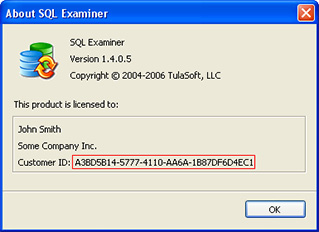SQL Examiner Suite 2010 release notes
May 18, 2010
The new release adds support for Oracle and MySQL databases, and enables cross-platform database synchronization and comparison. With greatly improved user interface and hundreds of small improvements suggested by our customers, the 2010 release is a major and highly recommended upgrade.
Later we released SQL Examiner Suite 2010 R2 which replaced the current version and was available at no cost to all users of SQL Examiner Suite 2010. You can find more information about that version in SQL Examiner Suite 2010 R2 Release Notes.
MySQL Schema Comparison
The support of MS SQL Server databases has been available forever. The new version of SQL Examiner adds MySQL to the list of supported databases, allowing comparing and synchronizing database structures of MySQL databases.
The newest release supports all basic MySQL database objects, including tables, views, procedures, functions, and users.
Oracle Schema Comparison
SQL Examiner 2010 supports Oracle databases, allowing comparing and synchronizing database structures of Oracle databases.
The new release supports most Oracle database objects including tables, views, procedures, functions, and users. The support for some less commonly used objects is scheduled to be implemented in the upcoming release, 2010 R2.
Cross-Platform Schema Comparison
For the first time, you can compare and synchronize MS SQL, MySQL, and Oracle database schemas to each other. Use SQL Examiner 2010 to perform cross-platform schema comparison and synchronization between all supported DBMS servers. For example, you can compare a MS SQL Server database with an Oracle database, Oracle with MySQL, and so on. The capability is somewhat limited by the range of object types that are implemented in a similar way by the different DBMS platforms.
SQL Examiner 2010 can compare and synchronize the differences between the same data types and similar object types implemented by different DBMS servers. If the same object type is supported on both DBMS servers, and if the data types a re compatible, you can use SQL Examiner to perform the comparison. You can synchronize tables, columns and constraints without vendor-specific code. In a word, you can perform the comparison and synchronization of any database objects that are supported in both sources.
CSV and MS Excel Data Comparison
SQL Data Examiner 2010 can use CSV and MS Excel files as a data source. This significantly simplifies regular import of data from CSV and MS Excel files into the database.
OLE DB Data Comparison
In addition to CSV and XLS formats, SQL Data Examiner 2010 can now use any data source based on the OLE DB provider. This allows you importing data not only from CSV or XLS files, but from any type of files for which an OLE DB provider exists.
Schema (owner) Mapping in SQL Data Examiner
SQL Examiner could map database schemas of different owners for ages. Today, SQL Data Examiner 2010 gains this feature as well. The new release of SQL Data Examiner can also perform schema mapping.
The Option to Define the Order of Data Synchronization in SQL Data Examiner
In pre-2010 versions of SQL Data Examiner, the database tables were always synchronized in the alphabetical order following the INSERT-UPDATE-DELETE pattern. It was often necessary to disable foreign keys and constraints before performing the synchronization.
SQL Data Examiner 2010 lets you define the exact order in which the tables will be synchronized, thus avoiding the need to disable the constraints. It is also possible to define the order of synchronization on the operation level, specifying which of the INSERT, UPDATE and DELETE operations to perform first in which table, thus eliminating the possibility of foreign key errors.
Improved Usability with All-New GUI
You asked, we listened. SQL Examiner and SQL Data Examiner 2010 feature a great deal of usability improvements that made comparing, synchronizing and analyzing databases easier. The number of changes is huge. Check out our all-new user interface!
Direction of Synchronization
SQL Examiner 2010 assigns the schema on the left as the source, and the one on the right as the destination, making the process easier to understand.
Query Comparison in SQL Data Examiner
SQL Data Examiner 2010 has greatly improved query comparison, eliminating most of the limitations existed in previous versions.
Background Processing in SQL Data Examiner
Comparing multiple big tables has always been time-consuming. SQL Data Examiner 2010 makes it possible to begin working with the results immediately as they become available. When the comparison of the first pair of tables is complete, you can start working with the results while other tables are being processed in background.
Project Options in SQL Data Examiner
SQL Data Examiner 2010 configures and stores project options separately from global settings. In effect, you can now define and store different settings for individual projects.
Automated Login Operation with Stored Passwords
SQL Examiner 2010 and SQL Data Examiner 2010 can now remember authorization data for database connections. If you have ever connected to a database with SQL Examiner and SQL Data Examiner, a list of logins pops up when you establish a new connection. Conveniently, you won't have to enter the login and password every time you connect to a database.
Other Enhancements
The list goes on and on. SQL Examiner Suite 2010 has a large number of other enhancements and improvements of which are too many to list. Together, the improvements make SQL Examiner Suite faster, greater and more usable.
